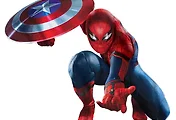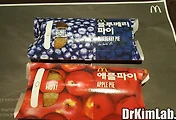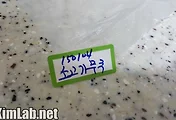요즘 반도체 노광 업계 중 가장 핫한 회사이자 기술인
ASML의 EUV 개발 이야기가 회사 블로그에 공개되서
여러분들게 보여주고자 번역하여 들고 왔습니다.
혹여나 번역에 오류가 있으면 지적해 주시기 바랍니다.
그리고 원본 글 주소는 다음과 같습니다.
https://medium.com/@ASMLcompany/the-20-year-journey-to-the-chips-of-tomorrow-4df3ac1ebc72
The 20-year journey to the chips of tomorrow
EUV lithography turns a corner in 2016
Along with our 2016 financial results released today, we noted how Extreme Ultraviolet (EUV) lithography turned a corner this year. The year 2016 has turned out to be an important step further in our journey towards taking EUV to full production in the field. Following years of development and testing, our EUV systems have now reached levels of productivity that have given our customers the confidence to place a significant number of orders.
오늘 2016년 재무 결과를 보면, 우린 EUV가 올해에 고비를 넘겼다는 것을 볼 수 있습니다. 이번 2016년은 우리의 EUV 장비가 매우 중요한 미래를 향하도록 양산에 도입됩니다. 지난 몇년간 개발과 시연으로 EUV시스템은 고객들이 충분한 생산을 할 수 있는 제품에 도달했습니다.
The semiconductor industry is now gearing up to use EUV lithography for high volume chip production. Introducing this completely new lithography technology will be one of the biggest technology transitions that the semiconductor industry has ever undertaken.
반도체 산업은 보다 높은 생산력을 위해 EUV장비 사용을 위해 준비하고 있습니다. 이번 포토장비의 출시를 통해 반도체 산업 시작 이래로 가장 큰 기술 전환이 될 것입니다.

It has been a long time coming, as the EUV story goes back nearly 20 years, to when long-term roadmaps were being drawn up by the industry in the late 1990s. To continue Moore’s Law, towards ever smaller, cheaper, more powerful and energy-efficient semiconductors, EUV lithography emerged as the most viable technology to pursue for the next-generation of chips.
90년대에 구상한 산업 로드맵으로 부터 20여년간 긴 EUV의 여정이 이제 도착했습니다. EUV 장비의 출시는 무어의 법칙이 지속되도록, 보다 더 작게, 저렴하게, 성능과 효율이 좋은 반도체를 만들기 위한 다음 세대의 칩을 제작을 가능케 합니다.
ASML has led the journey to deliver EUV lithography, but like many breakthroughs, it’s been a story of co-operation and collaboration. Working together with suppliers like Carl Zeiss SMT and major customers, many new technologies and processes have had to be mastered, and challenges solved and overcome. It required close relationships and team work based on trust and mutual respect.
ASML은 EUV를 이끌기 위해 여정을 떠나왔습니다. 그러나 대다수의 획기적인 발명들이 그렇듯이 협력과 조합의 이야기입니다. Carl Zeiss SMT를 비롯한 주요 고객들과의 협력 그리고 많은 신기술과 공정이 완벽해지고, 수많은 문제의 해결과 극복까지. 이 과정들은 믿음과 상호 존중을 바탕으로한 긴밀한 관계와 협동이 필요했습니다.
Initial research into the concept of using EUV for lithography had already started back in the 1990s and early 2000s, including at NTT in Japan, at the Bell Labs and Lawrence Livermore National Laboratory in the U.S. and at the University of Twente in the Netherlands.
EUV를 이용한 리소그래피 초기 컨셉 연구는 90년대에 시작했고, 2000년 초기에는 일본의 NTT와 미국 로렌스 리버모어에 있는 Bell 연구소 그리고 네덜란드 Twente 대학에서 시작했습니다.

Building on this early research, ASML developed two prototypes (known as Alpha Demo Tools) in 2006. They were sent to two research institutes — imec in Belgium and the SUNY Polytechnic Institute in the U.S. — so that researchers could test the fundamentally new system which involves a plasma source, reflective optics and a vacuum.
초기 연구를 시작하면서, ASML은 2006년에 2가지 프로토 타입을 제작했습니다.(알파 데모 툴로 알려져 있습니다.) 이들은 곧 두 연구소에 보내졌습니다. 하나는 벨기에의 imdc, 다른 하나는 미국의 SUNY 폴리텍 연구소 입니다. 덕분에 연구원들이 플라즈마 소스와 반사 광학 그리고 진공으로 이루어진 초기 시스템을 테스트 할 수 있었습니다.
The resulting data was positive and promising enough to convince ASML to invest in the next phase of development in 2007. In spite of the prevailing economic crisis and even though the technology wasn’t fully established, ASML committed to building a commercial EUV tool.
결과값은 긍정적이였고 ASML이 2007년에 다음 개발을 박찰 수 있는 확신을 주었습니다. 만연한 경제 위기와 기술이 완전히 정립되지 않은 상황 속에서도 ASML은 지속적으로 상업용 EUV 개발에 박찼습니다.
The first TWINSCAN NXE:3100 machine was shipped to a major customer in Asia in 2010. It delivered on the key promise of EUV: the ability to image smaller features, one of the drivers that underpins Moore’s Law. But it soon became clear that the step from the R&D fabs of chip makers — where future generations of chips and process technology are researched — to the high-volume manufacturing fabs was a big one.
2010년 최초의 TWINSCAN NXE:3100 장비는 아시아에 주요 고객에게 배달되었습니다. 이는 EUV의 약속을 배달한 것이나 마찬가지입니다. 보다 더 작은 이미지를 구현하고, 무어의 법칙을 열혈 지지자에게 말이죠. 그러나 칩 제조사가 다음 세대의 칩과 공정기술을 연구하는 R&D에서 대량생산이 가능케하는 과정으로 전진하는 것이 가장 중요한 것이라는 점이 확실해졌습니다.
“You just have to tackle one issue at a time
and then move onto the next one.”
“ 반드시 한번에 한개의 문제점을 해결하고
그다음 단계로 넘어가야만 합니다.”
Chip factories need to run 24 hours a day, seven days a week. So to be a viable new technology for chip manufacture, EUV systems not only need to process a large number of wafers in a short amount of time, but also do so continuously. What followed was a long, hard slog of solving all the engineering challenges this presented — it took longer and was harder than anticipated at the time.
칩 제조사들은 24시간, 1주일 동안 가동해야합니다. 그래서 이런 환경에 적합한 기술을 위해서는, EUV 시스템은 짧은 시간동안 대량 생산이 가능하면서 지속적이어야 합니다. 이런 기술들은 당시에 우리가 생각했는 것보다 더 오래 걸리고 어려웠기에, 풀어야하는 엔지니어링 과정은 길고 험난했습니다.
The new technology required a completely new way of thinking. Some things were easier — for example, the vacuum removed the temperature fluctuations that can cause problems in other lithography systems. But many were more difficult, such as unforeseen chemical interactions in the vacuum environment. As a program system engineer, Henk Meijer had been involved in the EUV program from the early days: “We were trying to do things no-one had done before. It always felt like a bit of a gamble and we could have been overwhelmed by all the different puzzles we had to solve. But you just have to tackle one issue at a time and then move onto the next one.”
새로운 기술은 완전히 다른 방식으로 생각해야 합니다. 어떤 것은 보다 더 쉽워지기도 합니다. 예를 들자면 진공은 온도 변화로 인해 리소그래피 시스템내에 발생 될 수 있는 문제를 없앨 수 있습니다. 그러나 대부분 경우는 어렵습니다. 예를 들어, 진공으로 인한 예상치 못한 화학 반응이 대표적입니다. 프로그램 시스템 엔지니어인 Henk Meijer은 초창기때 부터 EUV 프로그램에 속해 있었습니다. “우린 그 누구도 못했는 것에 도전하고 있습니다. 항상 도박하는 느낌이 들고 때로는 복잡한 퍼즐에 압도당한 기분이었습니다. 그래서 한번에 한가지의 문제점을 해결한 다음 다음 단계로 넘어가야만 합니다.”
Sometimes the teams even felt like they were conquering the impossible. “We started researching a pellicle (protective membrane for the mask) for EUV”, continues Meijer. “This film has to be 1,000 times thinner than household plastic wrap and withstand being heated to 500 degrees Celcius without cracking. Initially we thought it wouldn’t be possible, but then we stumbled on the solution through a research project set up to solve a different problem.”
때로는 팀은 불가능에 정복당한 분위기에 휩싸이곤 했습니다. “우리는 EUV용 펠리클을(마스크의 맴브래인을 보호하는 막) 먼저 연구하기 시작했습니다.” 이어서 “이 박막은 집에서 쓰이는 비닐랩 보다 1,000배는 더 얇습니다. 그리고 500도씨에도 그떡없어야 합니다. 처음에는 불가능하다고 생각했죠. 그런데 다른 문제를 풀면서 해결책을 찾았습니다”
By 2012 there was no doubt that the EUV scanners could print chip features for the next technology nodes, but the systems were still not ready for full production. Moving from the research phase to the manufacturing phase turned out to be the most challenging step, and more R&D was needed. To accelerate the work, ASML reached an agreement with its three biggest customers, chip makers Intel, TSMC and Samsung, to contribute 1.38 billion euros over five years. ASML hired hundreds of engineers as a result.
2012년에 들어서서 EUV 스캐너가 다음 세대 칩 제작을 할 수 밖에 없는 상황이 되었습니다만 시스템은 아직까지 대량생산하기에는 부족했습니다. 연구 단계의 제조 성능에서 대량 생산 가능 단계로 가기위해서는 보다 적극적인 R&D가 필요했습니다. 우리는 더 집중하기 위해서 주요 기업인 인텔, TSMC 그리고 삼성과 5년간 13.8억원 유로 규모의 협약을 맺었습니다. 덕분에 ASML은 수백명의 엔지니어를 더 고용했습니다.

In the same year, ASML also agreed to acquire partner company Cymer, which was developing the light source, to help accelerate progress. “We were working with their team in San Diego, and there was lots of drive to solve things, but we realized that we needed to add more resources to industrialize the source,” explains Christian Wagner, who joined ASML in 2001 and currently is the program system engineer for the light source. “No-one thought this issue would be so complex. To put it into perspective: there were only about 250 people working on the EUV light source in those days — now, there are over 1,000 people working together as one team in San Diego and Veldhoven.”
같은해 ASML은 큰 진전을 위해 EUV의 광원을 만들 수 있는 Cymer사와 파트너 협약을 맺었습니다. “우리는 이들과 San Diego에서 팀으로 활동했습니다. 그리고 싸이머에는 문제를 풀 수있는 능력이 있습니다만 문제 해결 방안을 보다 양산화 할 수 있도록 해야만 했습니다.” 2001년에 ASML에 입사후 계속 광원을 연구한 엔지니어인 Christian Wagner가 말했습니다. “그 누구도 이 문제가 복잡할 것이라 생각지도 못했습니다. 돌이켜 보면, 그때 당시에는 EUV 광원을 연구하는 사람이 250명 뿐이였지만 지금은 1,000여명이 함께 San Diego와 Veldhoven에서 협력하고 있습니다.
“One thing that amazed me over all the years was the team work.
People are there for each other.”
“EUV를 개발하는 과정에서 가장 놀라웠는 점은 바로 팀워크입니다.
사람들이 서로를 위해 존재합니다.”
At the end of 2013, the TWINSCAN NXE:3300B was shipped to customers, followed by the TWINSCAN NXE:3350B in late 2015. The mood in the industry was changing and confidence grew due to the improved results being reported — the systems were more reliable and could expose more wafers in just one day. ASML was focused on delivering 24/7 manufacturing, striving to reach the threshold of cost-effective production at 1,500 wafers per day.
2013년이 끝나갈 무렵, TWINSCAN NXE:3300B가 고객들에게 배송되었고, 2015년 말에는 TWINSCAN NXE:3350B가 배송 되었습니다. 반도체 산업은 바뀌고 보다 더 신뢰있고 생산력있는 결과물을 내고 있다고 보고 되었습니다. ASML은 24시간 1주일간 가동 가능하고, 하루에 1,500장을 생산할 수 있는 효율있는 제품을 개발하기위해 집중하고 있습니다.

Then in 2016, EUV lithography turned a corner. Productivity and availability met levels that gave ASML’s customers enough confidence to place orders, showing their commitment to introducing EUV into volume manufacturing in 2018/2019. Until then, ASML will be driving the performance even higher, to the level required for volume manufacturing, while continuing to build up manufacturing capacity for EUV systems at ASML and in the supply chain, as well as the capabilities of its service organization.
2016년에 들어서자, EUV는 고비를 넘어섰습니다. 생산성과 유용성이 ASML의 고객들이 충분히 만족할만한 수준까지 갔으며, EUV가 2018/2019년에는 제대로된 제품을 소개하겠다고 약속했습니다. 그때까지 ASML은 보다 더 높은 성능과 충분한 대량 생산력을 갖춘 제품이자 수요에 맞는 제품 공급 그리고 고객사의 서비스까지 갖추도록 할 것입니다.
It has been a long journey of highs and lows, and it sometimes threw up near impossible challenges. A constant factor has been the dedication of the teams and a belief that we could successfully overcome the technology challenges.
EUV 제작과정은 긴 희로애락의 여정이였습니다. 종종 불가능한 도전에 휩싸이기도 했습니다. 그래도 팀의 꾸준한 헌신과 기술을 극복하리라는 믿음은 성공의 주요한 요인으로 작용했습니다.
“One thing that amazed me over all the years was the team work,” says Wagner. “Maybe it’s because the challenge is so big, but people really help each other, they’re there for each other. And it’s very creative — so if you meet a problem, you get the right people together and you will get there.”
“한가지 이번 일을 통틀어서 가장 놀라웠는 점은 팀워크 입니다.” Wagner가 말했다. “아마 이는 가장 큰 도전입니다. 그러나 사람들은 서로가 서로를 도우면서 자신의 위치를 지켰습니다. 그리고 이는 창의력이 되었습니다. 또한 문제를 직면하면 서로가 서로 문제를 푸는데 도움이 되면서 당신 또한 그렇게 될 수있습니다.”
'연구노트 > 이야기' 카테고리의 다른 글
| ASML; Curiosity and ambition 번역 (0) | 2018.03.07 |
|---|---|
| 알아두면 재밌는 스파이더맨 상식 (0) | 2017.07.03 |
| 10년만에 돌아온 맥도날드 애플파이 그리고 블루베리파이 시식 후기 (2) | 2016.11.14 |
| 1년 10개월된 소고기 무국 시식 후기 (0) | 2016.11.09 |
| 애플의 용기있는 혁신. 과연 우리들의 반응은? (0) | 2016.09.21 |



